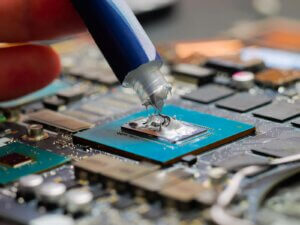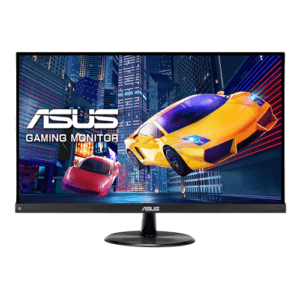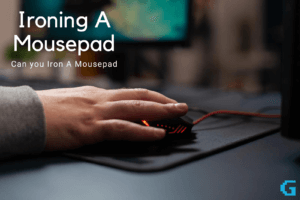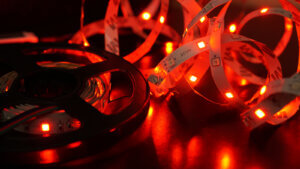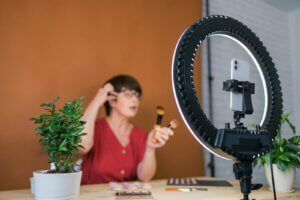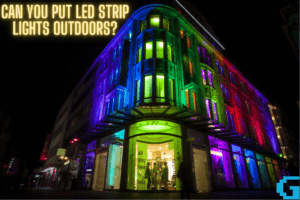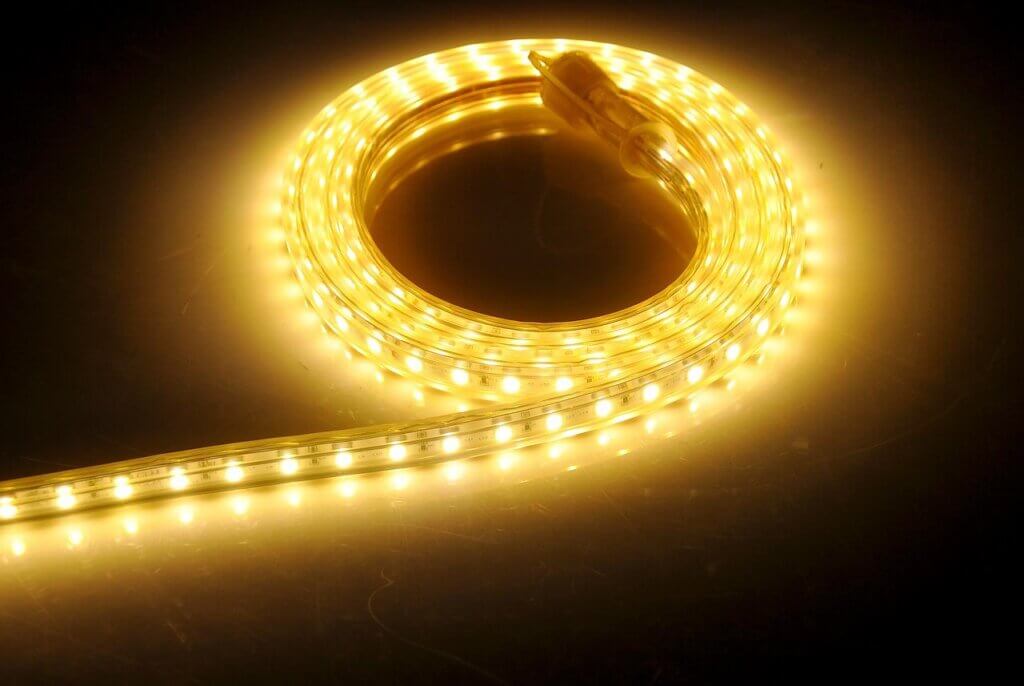LED strip lights are becoming increasingly popular. Because of their versatility, you can use them for both indoor and outdoor lighting applications. An LED strip from the wall can be removed in some cases.
Changing the hue or upgrading to a new LED strip may be your only option. You may find that, whether you live in an older home or are remodelling, they are not appropriate for you. They could be a pain to get rid of.
For each type of wall, the method of uninstalling an LED strip is different. The length of time it takes to remove the led strip light depends on the wall’s construction. LED strips can be more difficult to remove from a wall than you might expect.
Strips are stuck to the wall with a powerful adhesive, making them difficult to remove. LED strips can be removed from the wall and replaced with new ones, but this isn’t always a good idea. In order to avoid damaging the wall, it’s vital to follow the procedures below if you plan on removing the current LED strips. LED strip light removal is the focus of this article.
How To Remove LED Strip Lights From Wall
When you’ve got strips of led lights on the wall, they might not always be there when you’re ready to paint. You can get lights out of your wall as long as you’re willing to put in a little work and follow the right steps and understand how to remove led strip lights.
The first step is to disconnect them from their power supply. Make sure the light is protected from paint by covering it with a bandage. Scrape the light off using a flat screwdriver after using a blow dryer to remove the adhesive.
To remove the tape off the electrical box, use a utility knife to cut it and unscrew it. Take the box with you so that after you’re done painting the light may be reinstalled!
First, fix any lights that appear to be loose or damaged. Use a tape measure to remove the lights from the ceiling. To change the lights, you first need to remove the double-sided adhesive.
The following equipment is required:
- Pliers
- Screwdriver
- Metal scraper
- Texturing/seam roller
- Masking tape
- Tray (or another similar container).
There are a number of techniques to remove led strip lights from the wall, and each has its advantages and disadvantages. The first method is to utilise a “led stripper,” a gadget that may be purchased online. It’s a tool with a blade on one end and a hook on the other that’s used to remove material from a surface.
The hook makes it simple to remove the tape from the wall. As a safety precaution, this tool can be used to remove led strip lights from a wall while simultaneously disconnecting the strip from power.
As a second option, you can turn off electricity to the LED strip lights and then use pliers to remove them. If you’re not sure what you’re doing, start with the plier’s method. Toss the strip out of its box and place it on a flat surface.
Gently wipe the adhesive with a cotton swab soaked in rubbing alcohol. Repeat this procedure until the strip is free of the backing. A flat screwdriver can be used to help you get it all off.
Even though it’s attached to the wall, it should come off easily. There’s a good chance you’ll need to peel the strip off with pliers even if you’re using a “led stripper” to remove the lights.
What Are The Problems You Can Face?
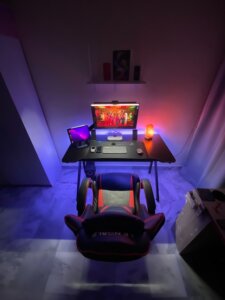
It’s a great idea to use LED strip lights for lighting. Versatile and adaptable, they can be used everywhere. LED lights outperform conventional types of lighting in terms of lifespan and utility.
For the most part, people buy these lights to illuminate their homes’ interiors and exteriors, respectively. Portable and able to be attached to any surface, they’re a godsend for anyone on the go.
The adhesive used to attach these lights raises one potential source of danger. Once these lights are affixed to the wall, you may be secure in the knowledge that they won’t be tampered with.
The opposite is true, however. If you don’t prep the wall before installing these lights, they can cause harm. Because of the strength of the glue, if not handled with care, it might permanently damage the wall.
Is it possible that LED strip lights can damage walls if they are exposed to excessive heat? There are many factors to consider, including the sort of paint you’re using. Heat-resistant coatings are common today and can withstand the LED strip lights’ high temperatures. However, you should check with the paint company first.
Is It A Good Idea To Remove And Reuse The LED Strip Lights?
It is never a good idea to remove and reapply the led strip lighting on the wall. The strip lights are a flexible material, but they still hold the strip in place with a small amount of stickiness. Applying the strip to the wall will probably cause a tear and make the strip lighting look jagged and uneven.
The LED lights are designed with a special adhesive that allows them to be applied to almost any surface. Thankfully, with a little research, you will be able to locate the proper cleaning material to remove the sticky residue that the LED lights left behind. Here are some of the best ways to know how to remove led strip lights from walls and reuse them.
These flexible LED light strips can be used in many different ways. However, they may be a tremendous hassle to remove and a difficult ordeal to deal with. Resticking and reusing LED light strips is as easy as following these basic procedures.
Begin by unplugging the light strip and using a blow dryer to heat the surface. Remove the glue by heating the surface to the point where it can be easily peeled off. Then use a razor blade to remove the adhesive residue off the surface.
To finish, remove any remaining glue from the sides and corners of the board. Finally, reapply the adhesive to the strip and stick it to the wall again. That’s all there is to it! For any project or room, you may now use it!
Related: Can you put tacks in LED strip lights?
Role Of Adhesives
LED strip lights require an adhesive. There are two sides to each LED strip light, which are joined via a PCB board. PCB boards must be flexible, but if you bend them too much, they will break. The copper side of the PCB board adheres with transparent glue, which does not affect the light source.
A drawback of employing LED strips is the adhesive. When adhering LED strips to a surface, it can be difficult to avoid air pockets that could interfere with the light’s path.
Some LED strip lights fall off because the glue is thick and there is a lot of friction between the two materials. It’s important to know that the glue will only adhere to clean, dry surfaces. Make sure you use a moist cloth to remove any debris or dust from the surface before applying the strip.
The strip won’t adhere as effectively if it’s too thick when applied to painted material. If you’re working with a dry and clean surface, the glue will adhere nicely and assist keep your LED strip lights in place.
Depending on the design of the light and the surface to which it is intended to adhere, different adhesives are utilised to mount it. For LED strips, adhesives differ in the amount of time it takes to install and the strength of the adhesive.
Two-part epoxy is used to speed up the setting process and ensure that the lights firmly adhere to the surface. Fast-fix LED strips work well with super glue as an adhesive.
Before applying any glue to the LED strip lights, it is advisable to conduct a test run. This can prevent the LED lights from falling off because of the adhesive. The adhesive is hidden by the strip’s plastic case when the light is installed.
Types Of Adhesives
There are 3 types of adhesive in terms of led strip lights. For example, there is a pressure-sensitive adhesive that works well with rough surfaces. They can also be used for various indoor and outdoor conditions.
The contact adhesive does not need to be pressed to stick. Just like the name sounds, it will stick by contact. Another is the general-purpose adhesive that is very strong and lasts for a long time on any surface. Now, let us look at the methods of how to remove led strip lights adhesive.
How Adhesives Are Removed
One of the most frustrating and time-consuming chores is removing pressure-sensitive glue. You’re more likely to succeed if you’re calm and methodical. The following steps will guide you through the difficult process of removing the glue.
Using a glass adhesive remover will get rid of it, but it will take some time. Scraping off the pressure-sensitive glue with a razor blade is the most effective method. The first step is to remove as much of the adhesive as possible. Take a razor blade and slowly begin scraping off the remaining adhesive after you’ve removed a substantial portion of it.
To begin, carefully detach the adhesive from the surface it is attached to using a blunt-edged tool like a butter knife. After that, a razor blade can be used to go into the nooks and crannies. Sticky residue can remain on a surface even after it has been cleaned. Using rubbing alcohol or acetone to dissolve it is the best way to get it off.
If that doesn’t work, run the tape under warm water and remove it. Even though this might be a time-consuming process, there are many items available that claim to make it simpler. However, the choice is yours!
With a little perseverance, you can easily remove contact glue from a variety of different objects. Place the soaked rag on the adhesive and let it sit for at least 30 minutes. Remove any remaining adhesive with a razor blade after a few minutes.
This all comes down to time. You don’t want to remove all of the old stuff by scraping it off too soon. A razor with a sharper blade will be more successful in this application. When scraping, take care not to injure yourself.
To get rid of any type of all-purpose adhesive, follow these procedures. Scrape away as much adhesive as you can before moving on to the next step.
Next, you’ll need to use a lot of solvent to get the job done. This works on just about any surface. If this doesn’t work, keep trying until you’ve removed all of the glue. Be careful not to get glue on your clothing when removing the adhesive.
Removing The Tape
The first thing you need to do is remove the sticky tape that has been holding the light strip in place. If there are two rows of light strips, then you’ll need to start at one end and carefully peel the back off the tape. Once you’ve done this, you’ll be able to pull the strip away. Take out the tape holding the strips in place and then you’ll be able to take out the strip.
Conclusion
Did you know that LED strips are one of the best ways to get your house to be brighter and have a better appearance? This is why more people are installing them in their homes! Since these strips are installed in the walls, it can be hard to remove them from time to time.
That is why it is a good idea to learn how to remove led strip lights without damaging them so that nothing gets damaged. Strips that have been placed on a wall without the correct adhesive can be removed without damaging your wall. The easiest and safest way to do this is to use a heat gun, a tool that is specifically designed to remove adhesive from surfaces. If you do not have access to a heat gun, you can also use a hairdryer.
Author
-
Gaming For PC (or GFPC for short) is made up of a small team of gamers, content creators, editors, and web design experts.
View all posts


